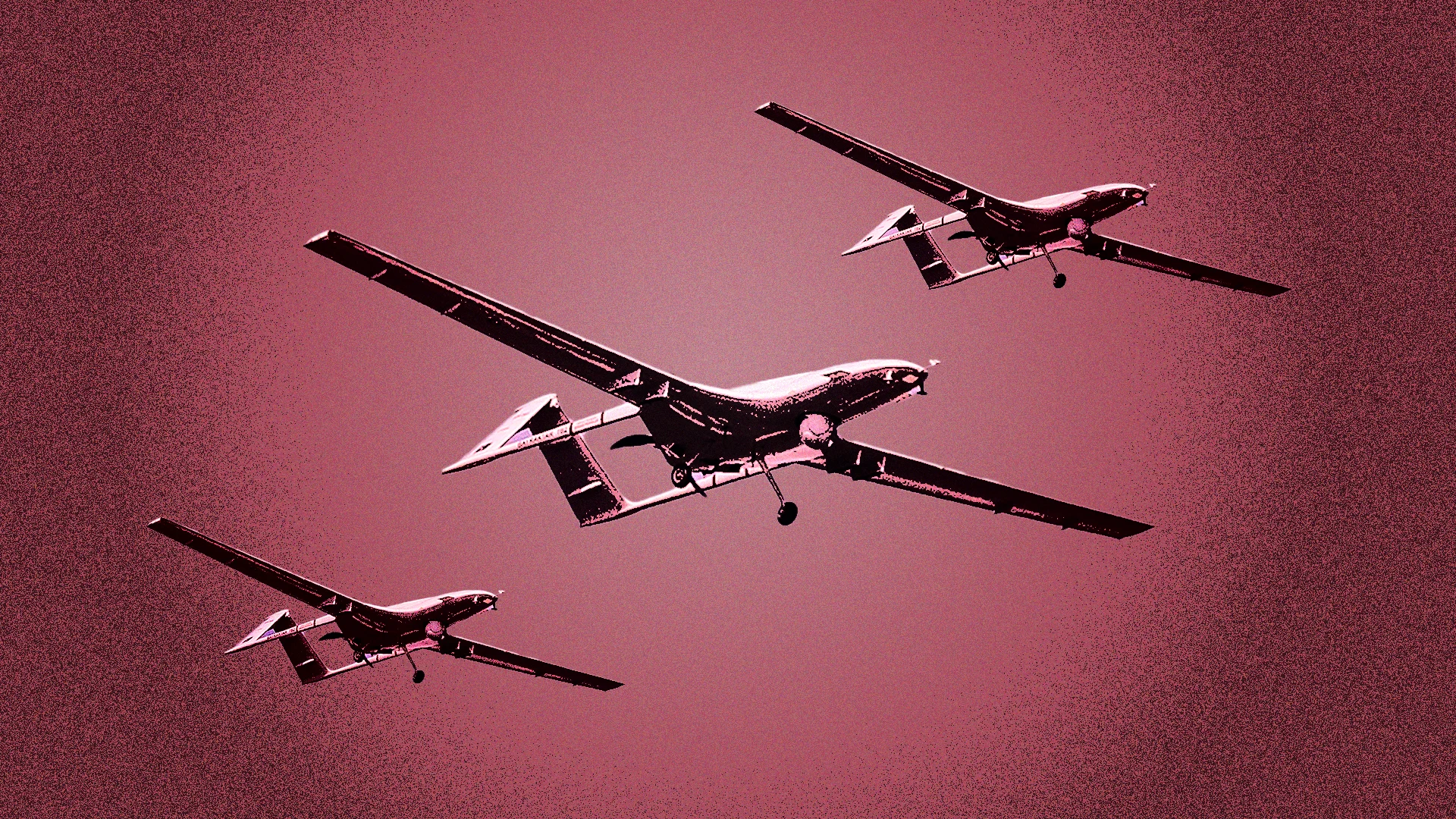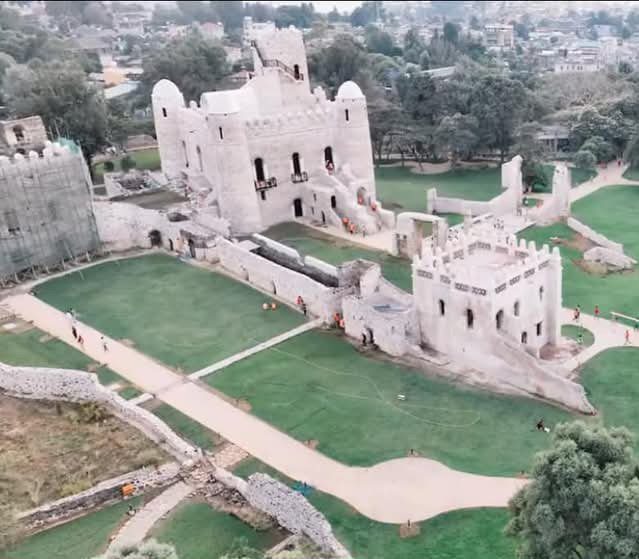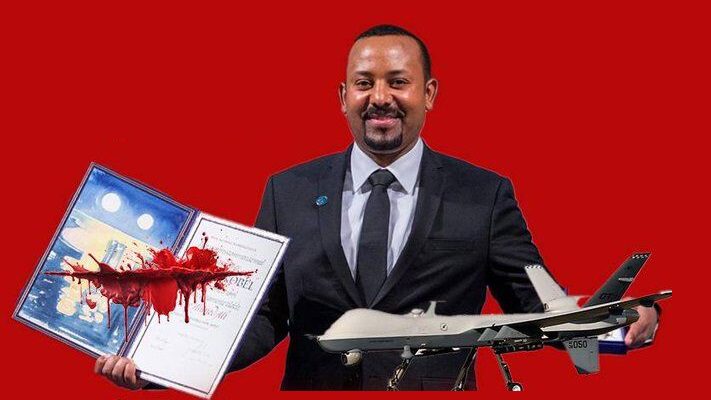Eshete Bekele
DW
 The civilian death toll resulting from drone strikes has markedly risen since the onset of the conflict in the Amhara region. The Ethiopian government refutes allegations of intentionally targeting non-combatants.
The civilian death toll resulting from drone strikes has markedly risen since the onset of the conflict in the Amhara region. The Ethiopian government refutes allegations of intentionally targeting non-combatants.
In a secluded village within Ethiopia’s Amhara region, a mother mourns the tragic loss of her 20-year-old son, who passed away just a month ago. In a phone interview with DW from her residence in West Gojam, she expressed her profound sorrow, stating, “I am hurt; he went to the market and never came back.”
The mother recounted the circumstances of her son’s death, revealing that he was killed in an aerial attack. After sharing this painful detail, she handed the phone to her husband, as DW opted to keep their identities confidential to safeguard them from any potential repercussions.
Her son was a ninth-grade student whose education was abruptly halted due to the outbreak of conflict between the Ethiopian federal government and Amhara Fano militants in April 2023. The ongoing violence has not only claimed lives but has also disrupted the futures of many young individuals in the region.

Since then, the number of civilians killed in drone strikes has increased significantly.
Drone strike on a market
On the morning of November 5, a drone strike hit a market in the small town of Zibst in the north of Ethiopia. The 20-year-old student turned second-hand cloth seller was among the 43 casualties.

His father received a phone call after a local identified his dead son through his identification card. “I took a car and rushed to the town,” the father said. “I brought him back and buried him in his birthplace.”
The death toll from the three rounds of drone strikes that targeted a marketplace, an elementary school and a health center, may have risen to 51, according to residents. The US-based Armed Conflict Location and Event Data Project (ACLED) recorded it as “the deadliest.”
“The strikes are occurring in the context of clashes either nearby or in the same location, but I believe this latest strike is somewhat unique because there were no conflicts happening at the time of the strike,” said Braden Fuller, a senior researcher at the Ethiopian Peace Observatory, an initiative under ACLED. Residents who spoke to DW echoed the researcher’s explanation.
Hundreds killed in airstrikes
There have been 54 airstrikes — 52 of which were carried out by armed drones operated by the Ethiopian National Defense Force (ENDF), according to ACLED’s latest figures. The strikes have resulted in an estimated 449 fatalities.
The estimate is likely low, as reporting drone strikes in remote areas of the country poses significant challenges, according to the Amhara Association in North America (AAA), which tracks conflict incidents across Ethiopia. The AAA reports that at least 125 drones and airstrikes by government forces in the Amhara region resulted in 754 deaths and 223 injuries.
Advocacy Director Hone Mandefro says the AAA documented strikes that only targeted civilians. “They are massacring innocent people who have no connection to the war, and this is not a mistake,” Hone told DW. “Since the government has repeatedly deployed combat troops and faced defeat, its remaining option is to terrorize the community to prevent support for the Fano.”
Ethiopia’s government denies targeting civilians
ENDF does not hide the use of drones in the fight against Fano militants in the Amhara region but refutes reports of civilian casualties.
“Drones are made for warfare,” Field Marshal Birhanu Jula, the army chief, said in an interview with the national broadcaster. “We bought them to fight.”
“When we find a group of extremists, we strike with drones. But civilians will not be targeted,” he insisted.
In October, the commanders of the Eastern Command’s 302nd Corps of ENDF confirmed that drones were used to target Fano militants in the North Gojam zone.
The AAA reported that the attack killed six farmers and injured four others. Legesse Tulu, Ethiopian government communications affairs minister, rejected reports of civilian casualties from the army’s strikes, labeling them as “unacceptable.”
During a televised press briefing on November 16, Legesse said the army conducted the strikes in a “selected and planned manner.”
Despite the government’s rejection, reports from domestic and international human rights organizations indicate a troubling situation.

Rights groups documents army’s use of drones
A report by the independent state-affiliated Ethiopian Human Rights Commission (EHRC) revealed that in the Amhara region “large numbers of civilians have been brutally killed by heavy artillery shelling and aerial bombardments mostly by drones” in a one-year period that extended through June. The Office of the United Nations High Commissioner for Human Rights (OHCHR) documented 18 UAV strikes that resulted in 248 civilian deaths and 55 injuries from August to December 2023.
These strikes also targeted essential facilities, including schools, hospitals and private homes, raising serious concerns about their compliance with international law, as noted in the OHCHR annual human rights situation report.
What drones is Ethiopia’s air force deploying?
Ethiopia’s air force revealed last year that it had established a drone unit, which includes the [Turkish-built] Bayraktar TB2 and other UAVs acquired in recent years.
Though Ethiopia is believed to have acquired additional UAVs, including some from China, security observers say the Bayraktar TB2 is the ENDF’s most effective option.
Ethiopia’s army recognized Haluk Bayraktar, the CEO of the private manufacturing company, “for his significant contribution to the capacity building of the Air Force.”
According to experts, the drones had a significant impact during the conflict in the Tigray region, which ended with a peace treaty between the TPLF and the government on November 3, 2022.
“I don’t see any evidence that the drone strikes are having any effect at all on the ongoing clashes involving the Fano militants in Amhara region and the Oromo Liberation Army (OLA) in Oromia regions,” ACLED researcher Fuller said.
“Even though these strikes might target high-profile leadership of the militias, the strikes are consistently hitting civilian targets,” Fuller added. Although the researcher believes that “they won’t be effective,” he expects that the government “will continue to use them.”
“We haven’t seen the Ethiopian government respond to such pressures in the past, whether they come from the public or from the international community,” he said.
Edited by: Chrispin Mwakideu
“እኛ የደራ አማራዎች ሟች እንጂ ገዳይ አይደለንም”
የደራ ነዋሪዎች pic.twitter.com/63Dlgu7kJ0
— ✞ Soስna (እሙ????)???????? (@Emuye06) December 1, 2024
















